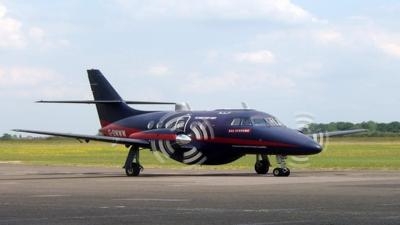Sun, Jun 24, 2012
Trials Will Include First Autonomous, Vision-Based Weather-Avoidance Routing
A Jetstream aircraft known as ‘The Flying Test Bed’, which can fly as if it were a UAV, is undergoing a series of flight trials in preparation for the first maiden flight of a surrogate UAV in UK shared airspace later this year.

The aircraft will fly using Instrument Flight Rules under air traffic control. In preparation, trials taking place this month include the world’s first use of autonomous, vision-based weather-avoidance routing and the first UK surrogate flight of a fully functional visual sense-and-avoid system which includes collision avoidance tests using a second aircraft. This trial will begin to demonstrate to regulators such as the Civil Air Authority and air traffic control service providers, the progress made towards achieving the safe use of UAVs in UK airspace.
The new technology is part of a suite of innovations being brought together for the first time as a UK industry-led program known as ASTRAEA (Autonomous Systems Technology Related Airborne Evaluation & Assessment); a UK industry-led consortium focusing on the technologies, systems, facilities, procedures and regulations that will allow autonomous vehicles to operate safely and routinely in civil airspace over the United Kingdom.
Lambert Dopping-Hepenstal, the Engineering Director at BAE Systems responsible for the ASTRAEA programme said: “The use of a surrogate Uninhabited Air Vehicle allows prototype autonomous systems developed by the ASTRAEA team to be evaluated safely in the air. The BAE Systems Jetstream Flying Test Bed has been configured as a “surrogate UAV’ where the on-board pilots can take their hands off the controls and hand over control to the on-board system developed by the ASTRAEA team. Racks of computers and control systems in the rear of the aircraft mean it can fly as if it were a UAV without any input from the pilots.
He continued: “The ASTRAEA system is capable of preventing mid-air collisions with other aircraft using a ‘sense and avoid’ system, detecting and avoiding bad weather conditions and relaying air traffic control instructions to the remote pilot via satellite to the ground control station. The weather avoidance system will use sophisticated image processing techniques to detect and avoid clouds and is just one of the new capabilities being tested on board the Jetstream.”
From now and until the winter, the ASTRAEA system on-board the Jetstream will be put through its paces, in a series of at least 20 flight tests over the Irish Sea and through UK airspace. (Image provided by BAe)
More News
Aero Linx: Transport Canada We are a federal institution, leading the Transport Canada portfolio and working with our partners. Transport Canada is responsible for transportation p>[...]
Gross Navigation Error (GNE) A lateral deviation from a cleared track, normally in excess of 25 Nautical Miles (NM). More stringent standards (for example, 10NM in some parts of th>[...]
From AirVenture 2017 (YouTube Edition): Flight-Proven Booster On Display At AirVenture… EAA AirVenture Oshkosh is known primarily as a celebration of experimental and amateu>[...]
Aircraft Parachute System (CAPS) Was Deployed About 293 Ft Above Ground Level, Which Was Too Low To Allow For Full Deployment Of The Parachute System Analysis: The day before the a>[...]
Also: 48th Annual Air Race Classic, Hot Air Balloon Fire, FAA v Banning 100LL, Complete Remote Pilot The news Piper PA-18 Super Cub owners have been waiting for has finally arrived>[...]
 ANN's Daily Aero-Linx (06.29.25)
ANN's Daily Aero-Linx (06.29.25) ANN's Daily Aero-Term (06.29.25): Gross Navigation Error (GNE)
ANN's Daily Aero-Term (06.29.25): Gross Navigation Error (GNE) Classic Aero-TV: Anticipating Futurespace - Blue Origin Visits Airventure 2017
Classic Aero-TV: Anticipating Futurespace - Blue Origin Visits Airventure 2017 NTSB Final Report: Cirrus SR22
NTSB Final Report: Cirrus SR22 Airborne Affordable Flyers 06.26.25: PA18 Upgrades, Delta Force, Rhinebeck
Airborne Affordable Flyers 06.26.25: PA18 Upgrades, Delta Force, Rhinebeck



